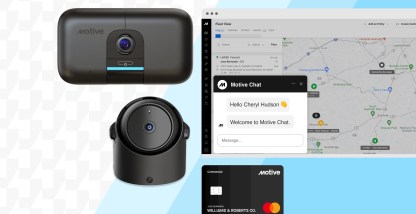Avoid HOS violations by following six rules. Before we jump into those rules, let’s look at a few facts:
- A failed roadside inspection can put your driver or vehicle out of service.
- Since the ELD mandate took effect, HOS violations have dropped sharply.
- A robust ELD solution can help keep your drivers in compliance.
Commercial vehicles are subject to regular inspections. If the driver or vehicle is out of compliance, it could result in a written warning or fine. If the issue is serious enough, the driver or vehicle can be immediately placed out of service.
In 2019, state and federal agencies performed nearly 3.5 million roadside inspections. Nearly 21% of vehicles were placed out of service. Until recently, Record of Duty Status was the most common HOS violation. From 2015 through 2017, it accounted for about 17% of all violations.
In 2018, the Record of Duty Status category accounted for only 8% of violations. And in 2019, only 6%. 2019 also marked the first time that RODS general form and manner violations fell. They dropped from the number one position down to number four.
What happened? ELDs.
No fleet wants a vehicle or driver to be placed out of service. Smart fleet managers and owner-operators understand what to expect in a roadside inspection. And how to be prepared. A comprehensive fleet management solution keeps you one step ahead of inspections, helping you avoid the consequences of a failed inspection.
HOS: no longer the number one violation
Hours of service violations were the driving force behind the ELD mandate. The mandate required commercial drivers to keep a Record of Duty Status. The ELD mandate also required drivers to switch from paper logs to an electronic logging device by December 2017. A driver should be familiar with HOS restrictions and be able to rely on a good ELD system. In other words, one that alerts the driver before a violation occurs.
Avoiding violations can save a fleet time and money. Your drivers can stay up-to-date with our HOS Cheat Sheet.
1. Know your cycle
Driving cycles depend on how many days of the week your carrier operates. If your carrier operates every day of the week, you’re eligible to operate under the 70-hour/8-day cycle. The cycle limits a driver to 70 on-duty hours over an 8-day period.
If your carrier operates less than 7 days a week, you can operate under the 60-hour/7-day cycle. The cycle limits a driver to 60 on-duty hours over any 7-day window.
These limitations are based on a “rolling” 7- or 8-day period. It’s done to give fleets flexibility so they can operate on a schedule that works for them.
2. Restart your drive cycle
If you want to refresh your driving cycle, you have to take 34 consecutive hours off-duty. The 34-hour restart rule went through some edits when it was passed. But this is the most up-to-date requirement for a restart, and it’s the only one you need to follow.
Once you take a 34-hour restart, all of your hours become available again. Even if you haven’t worked the full 60- to 70-hour work week.
3. The 14-hour rule
When a driver comes on-duty after taking at least 10 consecutive hours off-duty, they have a 14-hour window to complete the day’s driving. Although driving isn’t allowed after the 14th hour, drivers can work on other tasks.
4. The 11-hour rule
Within the 14-hour driving window, drivers are allowed to drive 11 hours at most. Those extra three hours account for non-driving tasks that crop up during the workday. Waiting to be unloaded, for example, or contacting dispatch. Just be sure you don’t drive more than 11 hours in your 14-hour day.
5. The 30-minute break
No driving is allowed after any 8-hour on-duty period until a driver has taken the mandatory 30-minute off-duty break. Drivers can satisfy this break requirement with any period of non-driving status (ie: on-duty, off-duty, sleeper berth). FMCSA doesn’t enforce the 30-minute off-duty break for everyone. The rule doesn’t apply to drivers who qualify for the short-haul operations exceptions and a few others.
Further reading: The Complete Guide to Canada Hours of Service Rules
6. Split sleeper berth
The split sleeper berth allows drivers to split the required 10-hour off-duty break into two shifts. One of those shifts must be be at least 7 hours long, spent entirely in the sleeper. The second shift must be at least 2 hours long and can be completed in the sleeper berth, off-duty, or as a combination of sleeper berth and off-duty. Both periods when added up must total to be at least 10 hours.
Regardless of the order in which a driver takes these breaks, taking them will give the driver a new 11-hour drive time and 14-hour driving window. The window begins after completion of the first qualifying break.
Sleeper berth extension
The sleeper berth extension allows drivers to extend their 14-hour window without taking the required 10 hours off-duty. By logging 8 to 10 hours in the sleeper berth, a driver can effectively freeze the 14-hour clock.
Safety for the future
Familiarizing yourself with the HOS basics can help you curb fines and keep your fleet out of trouble. Even the implementation of driver workflow support can help. But staying knowledgeable about potential policy changes is just as important.
The FMCSA published a notice of proposed rulemaking (NPRM) in August of 2019, and its commenting period ended in October 2019. The industry is waiting on word from the FMCSA about whether or not the following changes will go into effect:
- A short-haul exception that lengthens on-duty max from 12 to 14 hours and extends distance limit from 100 to 150 miles for select commercial drivers
- A modification to the Adverse Driving Conditions Exception offering an extra 2 hours to the amount of permitted driving
- Expanded flexibility for the 30-minute break rule allowing a driver to use on-duty, not driving status, rather than off-duty to satisfy the break
- An alteration to the sleeper-berth exception allowing a driver to split the required 10-hours off into two periods
- The right to one off-duty break of at least 30 minutes, but a maximum of 3 hours, that pauses a driver’s 14-hour window with the knowledge that said driver takes 10 uninterrupted hours off-duty at the end of their shift
As you ready your fleet for the challenges ahead, it’s a good idea to take ownership of fleet compliance. Be sure to stay connected here at Motive for the latest HOS violation updates and tips on successful compliance.










